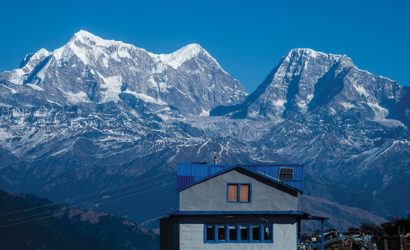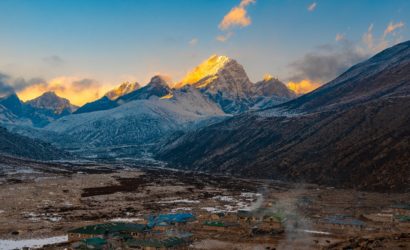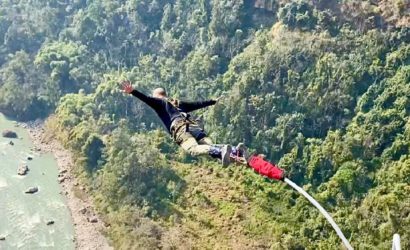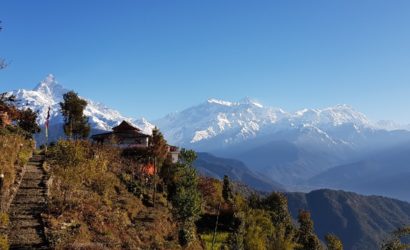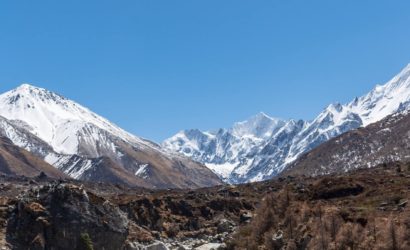Sunkoshi Rafting, Sunkoshi ” River of gold” is one of the finest rivers available for rafting because it is considered to be one of the 10 classic rivers in the world.
It starts from the bottom of Mt. Sisapangma and Langtang range of Nepal, Tibet border & runs through the Mahabharat Parbat range. Gathering power from tributaries draining some of the highest peaks of the world it emerges on to the northern plains of India where it flows into the Gangas.
From Dolalghat to its end at Chautara it runs for 270 km with grade 3-5 rapids. The experience is only enhanced by the experienc of remote village nestled on the laps of hills; Hindu temples and religious spots along the way make this trip really joyful.
Sleep under the moon’s light for 8 nights and make some unforgettable memories with us. Every night is awesome the excitement of sleeping somewhere new!
Our guides are experienced and are familiar with the river. They will provide all you need for a safe and comfortable float.
We raft to Chautara on the final day for two to three hours, where our ride awaits us. Then we’re driving back to Kathmandu. Note that there are many ways in which this adventure can be extended.
Combine our paragliding, bungee jumping, wildlife safari and/or trekking with our rafting trip. Let us know your interests and the perfect combination package will be managed for you!
Sunkoshi Rafting Difficulty & Required Experience
Adventurers of all ages can experience Sunkoshi Rafting. River rafting does not require any previous experience, it only requires a desire for fun. Rafting can be done all year round.
The rains bring even more exciting rapids during the monsoon season. Himalaya Discovery arranges complete management of the rafting excursion. For more detailed information, please feel free to contact us.
From Kathmandu, drive to Balephi, the raft put in point (3 hrs driving), lunch served, equipment packed and be ready to listen some important safety and paddling briefing by our guides.
Immediately, the action starts- paddle forward and harder. The three class rapids will be exercise for the learner rafters. The area is scenic and panoramic. Camp set at Dolalghat. Enjoy the dinner and campfire.
After having breakfast, we paddle down to encounter with challenge of “Meatgrinder”i.e. IV+ rapids. A few meters below here the Tamakoshi joins Sunkoshi on the left with a beach on the confluence.
There is another beautiful Shiva Temple, where the local pilg nnn+rims come worship every morning. We camp here.
Until the confluence with the Likhu Khola, we have short easy rafting and rapids are only iii class.
Thereafter, very soon we face the iv + rapid “High Anxitiety” with a large hole on the left highway down and series of holes at the bottom. Swim for a while splashing each other and camp.
After facing a several 3+rapids, we stop for a while to buy some necessary provisions and beers. Be ready to paddle faster because we encounter with challenge of v class rapids “Harkapur 2” and “Harkapur 3”, the hardest and biggest in this trip, which should be carefully scouted. Camp set—– and just think what a great day we have.
After the confluence with the Dudhkoshi river from Mt. Everest, the river becomes wide in size, but very soon we meet the “Jaws”, iv rapid.
Today is the hard day, as you will encounter with V class rapids “Rhino Rocks” and “Jungle Corridor” and a few continuous white water.
Waterfalls cascade on both sides of the river. One waterfall makes great spot for a team shower. We set camp and enjoy the tranquil night.
Relax yourselves because you paddle too much for couple of days.
Great waves not a big rapid so you can ask our kayakers to instruct you about how to roll.
Today, we are going to face the last rapid of this trip “Bigdipper” is a series of huge standing waves.
A few KM down we meet Arun and Tamur to form the river As Saptakoshi (seven rivers) and we will have numerous waves and whirlpools.
For a short time we go to visit Barahi temple in order to pick a so-looked small rock. We finish our trip at Chatara and then drive back to Kathmandu.


